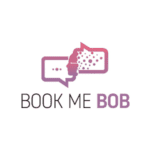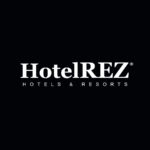 With the new safety guidelines from COVID-19, hotels have been mandated to disrupt, reconfigure and combine many operations, as well as do all this with a reduced staff to lower labor costs. This has created a tremendous burden for property teams; frontline employees are oftentimes overworked and potentially unfamiliar with the latest procedures, while supervisors are likewise spread thin and without a means of verifying proper training.
With the new safety guidelines from COVID-19, hotels have been mandated to disrupt, reconfigure and combine many operations, as well as do all this with a reduced staff to lower labor costs. This has created a tremendous burden for property teams; frontline employees are oftentimes overworked and potentially unfamiliar with the latest procedures, while supervisors are likewise spread thin and without a means of verifying proper training.
The ‘next normal’ may thus lead to morale and retention problems, where the only effective solution is further automation. While more attention is being given to how management software can streamline guest service and enhance contactless delivery, the concern today is over how we are going to hold on to our associates for the long-term as well as attract good candidates to the field.
“With Covid on everyone’s mind, what’s the incentive for people to enter hospitality nowadays besides needing a job?” asked Adria Levtchenko, CEO of PurpleCloud Technologies, during a videoconferencing interview. “In order to attract top talent, we need to create work environments where, even before the first guest enters the lobby, staff is confident that other team members are abiding by the new safety guidelines, and that they have all the necessary training and supportive systems to perform without being overwhelmed.”
Not the New but Next Normal
I call this current time period the ‘next’ normal instead of the ‘new’ normal because the post-pandemic hospitality landscape will go through many successive phases. This autumn will present several challenges that are highly dissimilar from those faced during the spring and summer months. And for all we know, conditions will be quite different yet again come next summer.
For one, more properties are slated to reopen this autumn, which will increase competition at the same time as local leisure volume traditionally drops off. Secondly, group and corporate guests, a core vertical for fall and winter occupancies, are still far from being restored as much of this business has gone the way of videoconferencing. This puts further pressure on FITs for driving profitability. Then on the operational planning side is the sharply decreased average look-to-book ratio for leisure reservations – often only seven days out or less for some properties – resulting in difficulties to adequately project staffing requirements.
Taken together, the challenge of an autumn occupancy crunch means that hotels will be increasingly reliant on operating with a lean team and a cadre of part-time laborers. As hotels look to trim costs by merging connected operations – like front desk, bell desk, concierge and valet – the few staffers you have onsite may feel in over their heads as they juggle several disparate, and perhaps unfamiliar, tasks at once. How do you motivate these individuals to stay with you through thick and thin? And if you are modeling payroll around a largely part-time workforce, how do you maintain operational continuity amidst so much displacement as people search for better and more consistent job opportunities?
When we broach the topic of social or human capital, what’s critical during these hectic times is to have people in place who know what they’re doing. Erratic staffing can drain your managers’ time and leave you more prone to service errors. As viral safety is top of mind for travelers in the near-term, this makes guests overly sensitive to infractions or even to employees who aren’t confident in their tasks. During low occupancies, you need customers singing your praises, both for word of mouth and return visits as well as for internal feedback to show your team that their hard work is paying off.
Platform features for the Next Normal
Management software can help to resolve a variety of problems associated with staffing during the next normal by facilitating the proper automation of basic tasks as well as enhancing training auditing and team coordination. In analyzing several of the leading platforms available on the market and some of the tools they’ve added as a response to the Covid crisis, I’ve identified three critical features where software is now critical for hotel operations and employee retention.
- Required training checklists. Prior to the pandemic, training was thought to be something that must be conducted in person by a supervisor or veteran team leader. With disruption forcing us to adopt online and mobile systems, checklists have become the rage whereby managers should be able to stipulate completion of certain training before any shifts are assigned. Employees can be encouraged through gamified elements such as real-time messaging from managers, scorecards or recognition for perfect scores. Security checklists are of particular importance as these can be set up for frequent recurrences and time-stamped so you know they are active throughout their shifts.
- Custom alerts. Building on the need for accountability in the security department – lest something go wrong on your watch – there should be customizable if-then conditions in place that allow for training modules to be completed within specified timeframes or else a supervisor gets an alert. Why hasn’t this lesson been completed? Why does this employee continually receive poor grades on tests? While we can use online training to evaluate individual performance and find our star performers, even more important is to discern why certain employees are underperforming. Identifying strugglers becomes particularly important when we are trusting our teams to be utility players by asking them to pitch in for a myriad of different departments and perform those tasks in accordance with viral safety guidelines.
- Team assignments. The very notion of utility players implies that individual team members will be asked to work in a range of operative pods throughout the typical workweek instead of strictly in one department or one section of the hotel. While we need utility players to keep staffing costs down and still fulfill service delivery requirements, these team rearrangements – sometimes even occurring within the same eight-hour shift – increase contact. Thus, not only do you need a platform that can automate and disseminate these reassignments in real-time, but also provide adequate contact tracing records so that any inkling of a Covid outbreak can be immediately contained.
All told, I don’t see a future where hotels revert back from the lean model we’ve come to embrace during these tumultuous times. The costs are simply too great to drastically ramp up staffing amidst so much continued uncertainty over occupancy and RevPAR growth. Hence, hotels will become increasingly reliant on automated systems for more seamless communications, guest service delivery and management of the fundamentals, thereby heightening the need for the right tools in any brand’s tech stack so that everything proceeds smoothly no matter what happens in world events. Keep these three features in mind when you go about evaluating your software provider.
This article may not be reproduced without the expressed permission of the author.


















